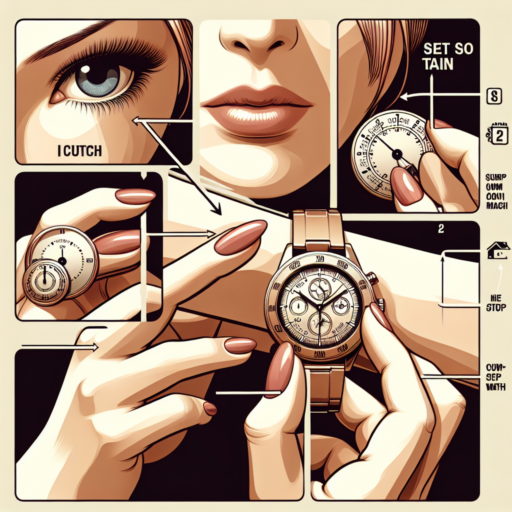No se han encontrado productos.
How should you use a heart rate monitor?
Using a heart rate monitor effectively can revolutionize your fitness routine by giving you detailed insights into your cardiovascular health and workout intensity. The first step in leveraging this tool is to understand its functionalities and how it aligns with your fitness goals. Whether you are a professional athlete, a fitness enthusiast, or someone interested in monitoring their heart health, knowing how to use a heart rate monitor can significantly impact your health journey.
Setting Up Your Heart Rate Monitor: Begin by ensuring your heart rate monitor is properly set up. This involves securely fastening it—whether it’s a chest strap, wristband, or another wearable—so that it remains in place during exercise but isn’t too tight to cause discomfort. It’s crucial for the device to maintain consistent contact with your skin to deliver accurate readings. Next, input personal details like age, weight, and height in the device’s settings, as these factors influence the accuracy of the data collected, especially when calculating calorie burn.
Identifying Your Heart Rate Zones: Understanding your heart rate zones is key to optimizing your workouts with a heart rate monitor. These zones range from very light intensity, beneficial for recovery and improving heart health, to maximum effort, which increases speed and power. Tailoring your exercise routine to target specific zones can enhance endurance, strength, and overall fitness. For instance, spending more time in the moderate to vigorous zones can boost your cardiovascular health, while the higher zones are excellent for improving anaerobic fitness.
How to use a heart monitor at home?
Using a heart monitor at home can be a straightforward way to keep an eye on your heart health, especially if you have a condition that requires regular monitoring or are embarking on a new fitness journey. To get accurate readings and make the most of your device, it’s essential to understand the proper steps and preparation involved.
Setting Up Your Heart Monitor
Start by thoroughly reading the instruction manual that comes with your heart monitor. Each model has its specifics, but generally, you’ll need to ensure the device is fully charged or has fresh batteries. Next, adjust the straps or placement area so that the monitor sits snugly against your skin without being too tight. For chest strap models, this usually means positioning it just below the chest muscle. For wrist models, wear it above your wrist bone. Ensure the sensors are clean and dry for optimal connectivity.
Taking a Reading
- Find a quiet place where you can relax for a few minutes without interruptions.
- Sit comfortably and wrap the cuff or place the monitor as instructed. Ensure your body is relaxed and your arm is supported.
- Turn on the device and follow any on-screen prompts to start the measurement. It’s important not to talk or move during this time to ensure accuracy.
- Wait patiently until the monitor indicates that the reading is complete. This could take a few moments or longer, depending on the device.
After taking your reading, it’s useful to record it in a log or an app if your model has this feature. Monitoring changes over time can provide valuable insights into your heart health and help you notice any patterns or irregularities. Remember, while home heart monitors can offer significant information and peace of mind, they do not replace professional medical advice. If you ever have concerns about your heart rate readings, it’s critical to consult a healthcare professional.
How do you work out with a heart rate monitor?
Working out with a heart rate monitor is a science-backed method to optimize your training sessions, improve fitness levels, and track your progress over time. By understanding and monitoring your heart rate in real time, you are able to adjust your workout intensity to stay within specific heart rate zones tailored to achieve your fitness goals. This approach ensures that you are not undertraining or overtraining, making each session as efficient as possible.
First and foremost, to effectively work out with a heart rate monitor, you need to determine your maximum heart rate—the highest number of beats per minute your heart can reach during maximum physical exertion. A common method to estimate this number is by subtracting your age from 220. Once you have this figure, you can calculate the different heart rate zones, which are percentages of your maximum heart rate. These zones range from very light intensity, ideal for warming up and cooling down, to maximum intensity, suitable for short, explosive training sessions.
Setting up your heart rate monitor correctly is crucial. Ensure the device is snug against your skin to accurately capture heart rate data. Many athletes prefer a chest strap for its accuracy, while others opt for wrist-based monitors for comfort. Once you’ve set up your device, start by identifying your resting heart rate first thing in the morning. This baseline is essential for individualized zone training.
During a workout, keep an eye on your heart rate monitor to ensure you’re training within the correct zone. Adjust your intensity by speeding up or slowing down based on the feedback from your monitor. For instance, if your goal is to improve cardiovascular endurance, you’ll want to spend most of your workout in the moderate-intensity zone, which is typically 50% to 70% of your maximum heart rate. This strategic approach not only enhances your workout efficiency but also minimizes the risk of injury and overtraining.
What is a healthy heart rate?
Understanding what constitutes a healthy heart rate is critical for maintaining optimal cardiovascular health. Commonly referred to as your pulse, this vital sign reflects the number of times your heart beats per minute (bpm) when at rest. For a typical adult, a healthy resting heart rate ranges from 60 to 100 beats per minute. However, it’s essential to note that factors such as age, fitness level, and overall health can cause variations in this range.
Individuals who engage in regular aerobic exercise, like runners or cyclists, may have a lower resting heart rate. It’s not uncommon for athletes to report resting heart rates as low as 40 to 60 beats per minute. This is a reflection of their heart’s efficiency; a lower heart rate indicates that the heart needs fewer beats to pump an adequate amount of blood throughout the body. Regular physical activity strengthens the heart muscle, thereby improving its ability to pump blood with less effort.
Conversely, higher resting heart rates may signal an increased risk of cardiac problems under certain conditions. Continuous or significant elevations above the standard range may necessitate a medical evaluation to determine the underlying cause, such as stress, dehydration, or a potential heart condition. Monitoring your resting heart rate over time can provide valuable insights into your heart health and overall well-being. It’s a simple yet powerful tool for early detection of possible health issues. Engaging in a consistent routine of measuring your heart rate, particularly in a relaxed state, can help identify trends and prompt discussions with healthcare providers when necessary.




